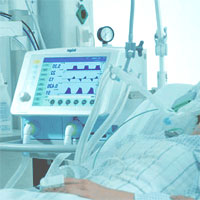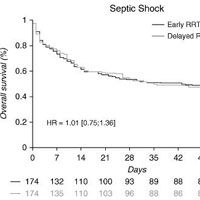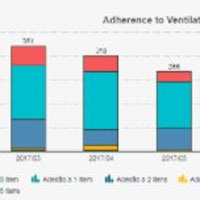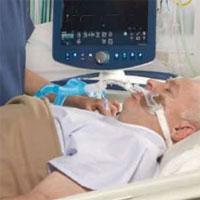Tag: strategy

SOS Asynchronies: Do We Need Help?
Synchrony between the patient and the ventilator is defined as the appropriate interaction between the two, where the ventilator recognizes patient’s effort and provides support for breathing at the right time—that is,... read more

Out-of-hours Discharge from ICU, In-hospital Mortality and ICU Readmission Rates
Out-of-hours discharge from an ICU is strongly associated with both in-hospital death and ICU readmission. These effects persisted across all definitions of “out of hours” and across healthcare systems in different geographical... read more

Ranking antibiotics in order of allergenicity
Our current approach to allergy is primarily patient-based. This focuses on the patient’s prior history of reaction: how severe was it, when was it, how certain are we that it was truly allergic? This strategy has been... read more

Timing of Renal Support and Outcome of Septic Shock and ARDS
Early RRT initiation strategy was not associated with any improvement of 60-day mortality in patients with severe acute kidney injury and septic shock or Acute Respiratory Distress Syndrome (ARDS). Unnecessary and potentially... read more

Pediatric Sepsis Endotypes Among Adults With Sepsis
Recent transcriptomic studies describe two subgroups of adults with sepsis differentiated by a sepsis response signature. The implied biology and related clinical associations are comparable with recently reported pediatric... read more

Effect of a Multifaceted Performance Feedback Strategy on Length of Stay Compared With Benchmark Reports Alone
In the context of ICUs participating in a national registry, applying a multifaceted activating performance feedback strategy did not lead to better patient outcomes than only receiving periodical registry reports. The extent... read more

More Than a Tick Box: Medical Checklist Development, Design, and Use
Despite improving patient safety in some perioperative settings, some checklists are not living up to their potential and complaints of "checklist fatigue" and outright rejection of checklists are growing. Problems reported... read more

Joint Consensus Statement on Postoperative Gastrointestinal Dysfunction Within an Enhanced Recovery
The primary driver of length of stay after bowel surgery, particularly colorectal surgery, is the time to return of gastrointestinal (GI) function. Traditionally, delayed GI recovery was thought to be a routine and unavoidable... read more

Early goal-directed nutrition in ICU patients (EAT-ICU)
Extensive weight loss has been documented in intensive care unit (ICU) survivors, primarily as the result of muscle loss, leading to impaired physical function and reduced quality of life. The aim of the EAT-ICU trial is... read more

Choosing the Appropriate Configuration and Cannulation Strategies for ECMO
Extracorporeal membrane oxygenation (ECMO) is becoming a common procedure to support patients with severe cardio-circulatory or respiratory failure as well as in case of combined compromise of the two systems. Deciding which... read more

Should Transfusion Trigger Thresholds Differ for Critical Care vs Perioperative Patients?
The safety of restrictive transfusion strategies likely differs for critically ill patients versus perioperative patients. Further trials investigating transfusion strategies in the perioperative setting are necessary. The... read more

Post Resuscitation Management of Cardiac Arrest Patients in the Critical Care Environment
There is a clear relationship between evidence-based post resuscitation care and survival and functional status at hospital discharge. The Australian Resuscitation Council (ARC) recommends protocol driven care to enhance... read more

Strategies for the Prevention of Airway Complications
Despite being infrequent, complications of airway management remain an important contributor to morbidity and mortality during anesthesia and care of the critically ill. Developments in the last three decades have made anesthesia... read more

Implementing Clinical Practice Changes in Critical Care
Lessons learned in a national collaborative of over 60 ICU teams. Improving care in the intensive care unit (ICU) is a global area of focus for clinicians worldwide. The complexity of the ICU environment, compounded by multiple... read more








